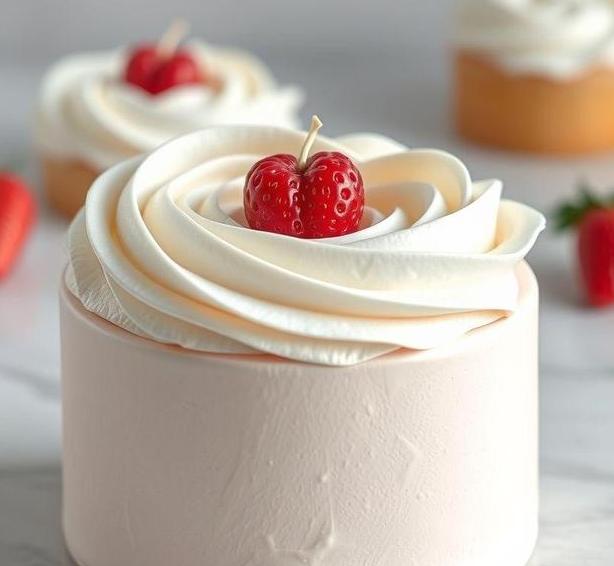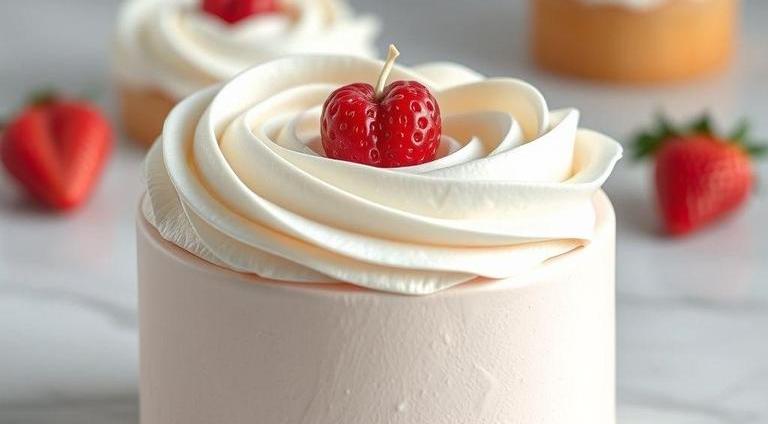Can Buttercream Frosting Go Bad : What You MUST Know
Buttercream frosting is one of those quintessential components of baking that can elevate a simple cake or cupcake to something extraordinary. Whether it’s the smooth, sweet, and slightly buttery flavor or the glossy, creamy texture that makes it so irresistible, it’s no wonder that buttercream is a staple in kitchens worldwide. But like all things perishable, buttercream frosting doesn’t last forever. You might find yourself with extra frosting after a baking session, wondering how long it can be safely stored, or if it’s still good to use after a few days.
In this guide, we’ll explore whether buttercream frosting can go bad, how to tell if it’s spoiled, the shelf life you can expect, how to store it, and some expert tips to help you preserve that smooth, fluffy goodness for as long as possible. Let’s dive into the details of buttercream frosting storage so you can avoid waste and keep your baking endeavors sweet and stress-free.
Can Buttercream Frosting Go Bad?
The simple answer is: Yes, buttercream frosting can go bad. Like any food product that combines dairy and sugar, it has a limited shelf life. Several factors influence how long it stays fresh, including the ingredients used, storage methods, and environmental conditions. In particular, the dairy content (like butter, milk, or cream) is what makes buttercream prone to spoilage. Even though it’s high in sugar-which acts as a preservative-it’s still sensitive to temperature, moisture, and time.
To break it down:
- Butter: Being a dairy product, butter contains fat and moisture that can spoil if exposed to heat or left unrefrigerated for too long.
- Sugar: While sugar helps extend the shelf life of frosting, it’s not enough to prevent spoilage entirely.
- Milk/Cream: If your frosting contains milk or heavy cream, these ingredients are highly perishable and can lead to bacterial growth.
So, if you’re planning to use leftover buttercream frosting, be mindful of when it was made and how it was stored.
Shelf Life For Buttercream Frosting

The shelf life of buttercream frosting depends on a few key factors, primarily how it’s stored and the ingredients used. Here’s a breakdown of how long buttercream frosting can last under different conditions:
- At Room Temperature (Unfrosted): Buttercream frosting can last for up to 2-3 days at room temperature, but this is best for short-term use. If it’s not used right away, the quality can start to decline.
- Refrigerated (Unfrosted): In the fridge, buttercream frosting can last for up to 1-2 weeks. This gives you a good window of time to use it in your baking projects.
- Frozen (Unfrosted): If you want to store your frosting for a longer period, freezing is your best option. Buttercream frosting can last for up to 3 months in the freezer. Just make sure to store it in an airtight container to prevent freezer burn.
- After Being Applied to Cakes/Cupcakes: Once buttercream frosting is applied to cakes or cupcakes, its shelf life shortens slightly due to the exposure to air and moisture. You should aim to consume frosted cakes within 3 days if kept at room temperature or up to a week if refrigerated.
To make sure your buttercream frosting stays as fresh as possible, keep an eye on the expiration date of any dairy ingredients you use and always follow storage guidelines carefully.
Common Signs Of Spoilage
It’s not always obvious when buttercream frosting has gone bad, but there are some telltale signs to look out for. If you notice any of the following, it’s best to discard the frosting:
- Separation or Wateriness: If your frosting starts to look watery or the butter and sugar separate, it’s a sign that it’s breaking down. This is often due to improper storage or the frosting being kept at too high a temperature.
- Off Smell: Fresh buttercream should smell sweet and creamy. If it starts to smell sour, rancid, or off in any way, this indicates that the dairy ingredients have begun to spoil.
- Mold Growth: Any visible mold is a clear sign that the frosting has gone bad and should be discarded immediately.
- Discoloration: If the frosting begins to change color, particularly to a yellow or brownish hue, this could be due to oxidation or bacterial growth.
- Strange Taste: A sour, bitter, or “off” taste is another indicator that your buttercream is no longer safe to consume.
When in doubt, it’s always better to be cautious and not risk using spoiled frosting, especially when it contains dairy or cream.
How To Store Buttercream Frosting?

Proper storage is essential to prolong the life of your buttercream frosting. Here’s how you can store it for maximum freshness:
-
Room Temperature Storage
- If you plan to use the frosting within a couple of days, you can leave it out at room temperature.
- Place the frosting in an airtight container to prevent it from drying out and being exposed to contaminants in the air.
- Store it in a cool, dry area away from direct sunlight or heat sources (this includes avoiding placing it near stoves or ovens).
-
Refrigeration
- If you’re not using the frosting within a day or two, store it in the fridge. Transfer it to an airtight container to avoid it absorbing odors from other foods.
- When you’re ready to use refrigerated frosting, let it sit at room temperature for a while to soften. You can also give it a quick whip with a hand mixer to restore its fluffy consistency.
-
Freezing
- For long-term storage, freezing is your best option. Place your frosting in a freezer-safe, airtight container. If you’re freezing large batches, consider dividing it into smaller portions so you can thaw only what you need.
- Label the containers with the date so you know when it was made.
- To thaw frozen frosting, leave it in the fridge overnight, then bring it to room temperature and re-whip to bring back the original texture.
Pro Tip: Always store buttercream without any cake or cupcakes, as the additional moisture from baked goods can affect the freshness of the frosting.
Expert Tips
- Use High-Quality Ingredients: The fresher your ingredients, the longer your buttercream will last. Opt for high-quality butter and fresh cream or milk, as these ingredients play a significant role in the frosting’s shelf life.
- Don’t Overbeat the Frosting: While you might want your buttercream to be light and fluffy, overbeating can introduce air into the mixture, making it more prone to spoilage. Aim for a smooth, creamy texture rather than over-whipping.
- Stabilizers for Longer Shelf Life: If you want your frosting to stay fresher for longer, consider using stabilizers like powdered sugar (instead of granulated sugar) or adding a touch of corn syrup. These help to prevent the frosting from breaking down too quickly.
- Avoid Humidity: If you live in a particularly humid environment, store your frosting in the fridge and only bring it out to room temperature when you’re ready to use it. Humidity can cause frosting to melt or lose its shape.
FAQs
Can Buttercream Frosting Go Bad If Left Out?
Yes, buttercream frosting can go bad if left out at room temperature for an extended period, especially if it contains perishable ingredients like cream or milk. It’s recommended to refrigerate it if not using it immediately.
How Long Can Buttercream Frosting Sit Out Before It Goes Bad?
Generally, buttercream frosting can sit out for up to 2 hours. After that, it’s best to refrigerate it to prevent bacterial growth, especially if it contains dairy products like milk or cream.
What Signs Indicate Buttercream Frosting Has Gone Bad?
Signs that buttercream frosting has gone bad include a sour smell, discoloration, separation of liquids, or a change in texture (becoming too runny or overly stiff). Any mold growth is a clear sign it should be discarded.
Can Buttercream Frosting Go Bad In The Fridge?
Yes, buttercream frosting can go bad in the fridge if stored improperly. It should be kept in an airtight container to prevent it from absorbing odors from other foods and to maintain its quality for up to 2 weeks.
How Long Does Buttercream Frosting Last In The Fridge?
When properly stored in an airtight container, buttercream frosting can last up to 2 weeks in the refrigerator. However, if it contains dairy, such as cream or milk, it may only last around 1 week.
Can You Freeze Buttercream Frosting?
Yes, buttercream frosting can be frozen. It can last up to 3 months in the freezer when stored in a tightly sealed container. When ready to use, allow it to thaw at room temperature and then re-whip to restore its consistency.
How Can I Tell If My Buttercream Frosting Has Spoiled?
If your buttercream frosting has a sour or rancid odor, off-color, or a noticeable change in texture (e.g., separation), it has likely spoiled. If in doubt, it’s safer to discard it.
Does Buttercream Frosting Need To Be Refrigerated After Making It?
While buttercream frosting can be left out for a few hours, it should be refrigerated if it contains perishable ingredients such as milk, cream, or cream cheese. If it only contains butter, it can be stored at room temperature for short periods.
What Should I Do If My Buttercream Frosting Is Too Soft And Melting?
If your buttercream frosting becomes too soft or starts melting, place it in the refrigerator for about 15-20 minutes to firm it up. Once chilled, re-whip it to restore its fluffy consistency.
Can I Use Buttercream Frosting Past Its Expiration Date?
If buttercream frosting is past its expiration date but has been stored properly and shows no signs of spoilage (such as sour smell, mold, or separation), it might still be safe to use. However, it’s always best to err on the side of caution and discard it if in doubt.
